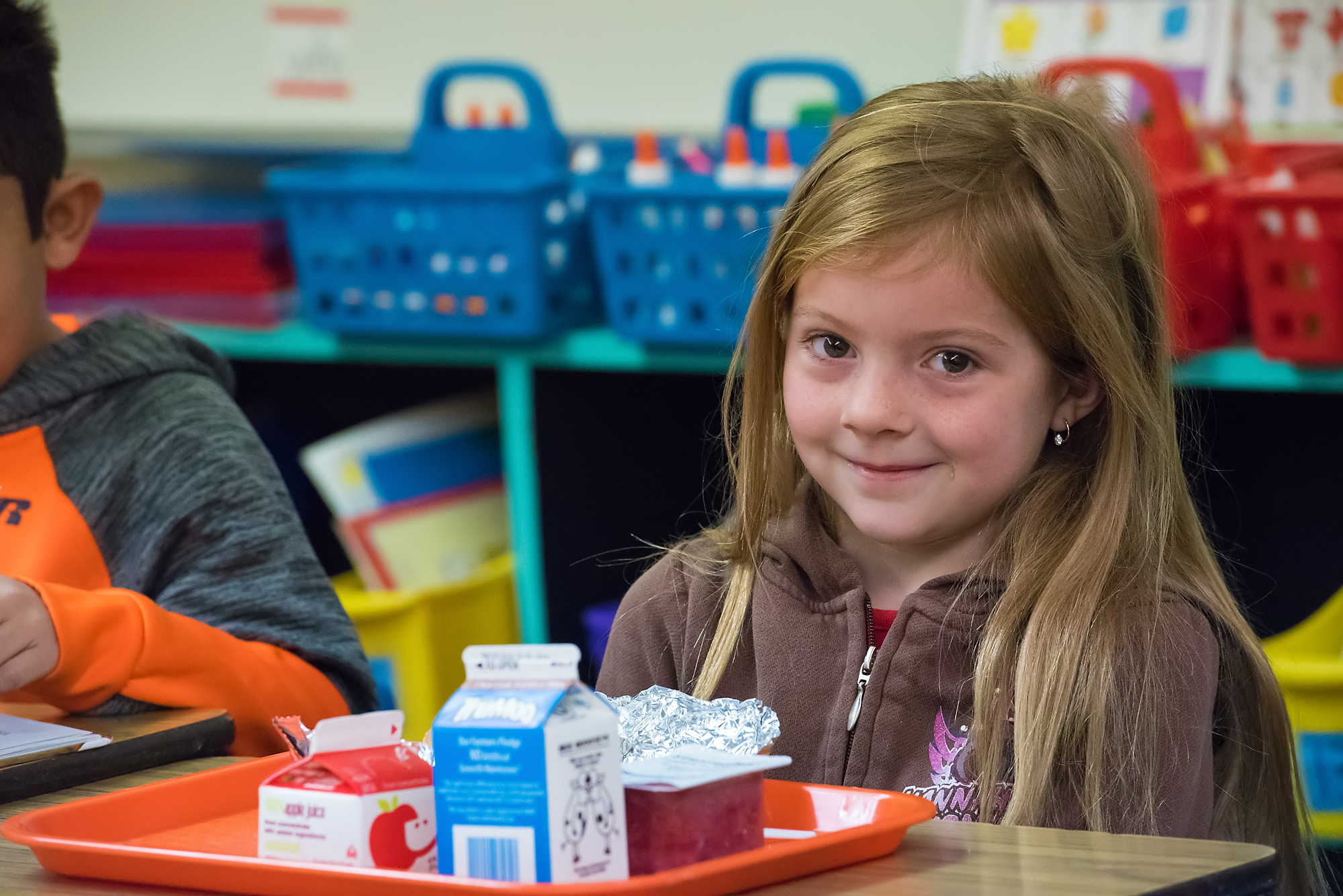by Katie Maschino, Hunger Outreach Specialist, Hunger Free Oklahoma
We have all heard the saying “breakfast is the most important meal of the day,” and research consistently proves that eating breakfast is better for our physical and mental health than skipping breakfast altogether. For children, the benefits of eating school breakfast are especially strong. Research shows school breakfast can improve many aspects of a student’s daily life including dietary intake and overall nutrition, mental and physical development, ability to learn, overall academic achievement, and behavior in school.
Breakfast After the Bell (BATB) models make breakfast a part of the school day by serving meals to students after the school day has officially started. BATB has been proven to boost breakfast participation, meaning more children are eating a healthy breakfast. This increase in participation can also boost a school’s reimbursements, potentially making serving breakfast more feasible for schools.
School Benefits
- With little to no change to bell schedules, schools can incorporate breakfast into daily routines
- Improved concentration and alertness result in fewer behavior and attention issues
- Improved cognitive function, attention, and memory can translate into better student engagement and test scores
- Fewer tardies, absences, disciplinary referrals, and trips to the school nurse can keep students present and engaged in the classroom
- BATB can provide opportunities to promote responsibility and self-esteem in students while fostering positive interactions with peers and teachers
Breakfast After the Bell Models
- Meals are typically delivered directly to the classroom where students eat with their peers for the first 10-15 minutes of the school day. Ideal for younger students who start their day in the same classroom.
- Students pick up breakfast from the cafeteria or a cart in the hallway on the way to their classroom or a designated area to eat. Ideal for older students who are more independent or for schools that may find it difficult to deliver meals directly to the classroom.
- Breakfast is offered at a later time, usually after the first period or during an advisory period. Breakfast can be served through a traditional cafeteria line or from a cart located in a hallway. Ideal for older students who arrive at school just in time for class or who choose to be social before class.
Keys to a Successful BATB Program:
- Engage All Stakeholders Early and Often – All BATB models require collaboration, communication, and support from everyone at school. Engaging stakeholders early in the process is essential to ensure everyone is on the same page and potential obstacles can be addressed.
- Universal Free Breakfast – The effectiveness of all BATB models is amplified when breakfast is offered free to all students. Offering breakfast free to all students regardless of their economic status increases participation, meaning more students get a nutritious breakfast to start their school day.
For more information about how to make Breakfast After the Bell models work for your school, contact Katie Maschino and check out additional resources.
National School Breakfast Week is March 8-12, 2021! Check out our social media pages on Facebook and Twitter to see what schools across Oklahoma are doing to feed their students school breakfast.

